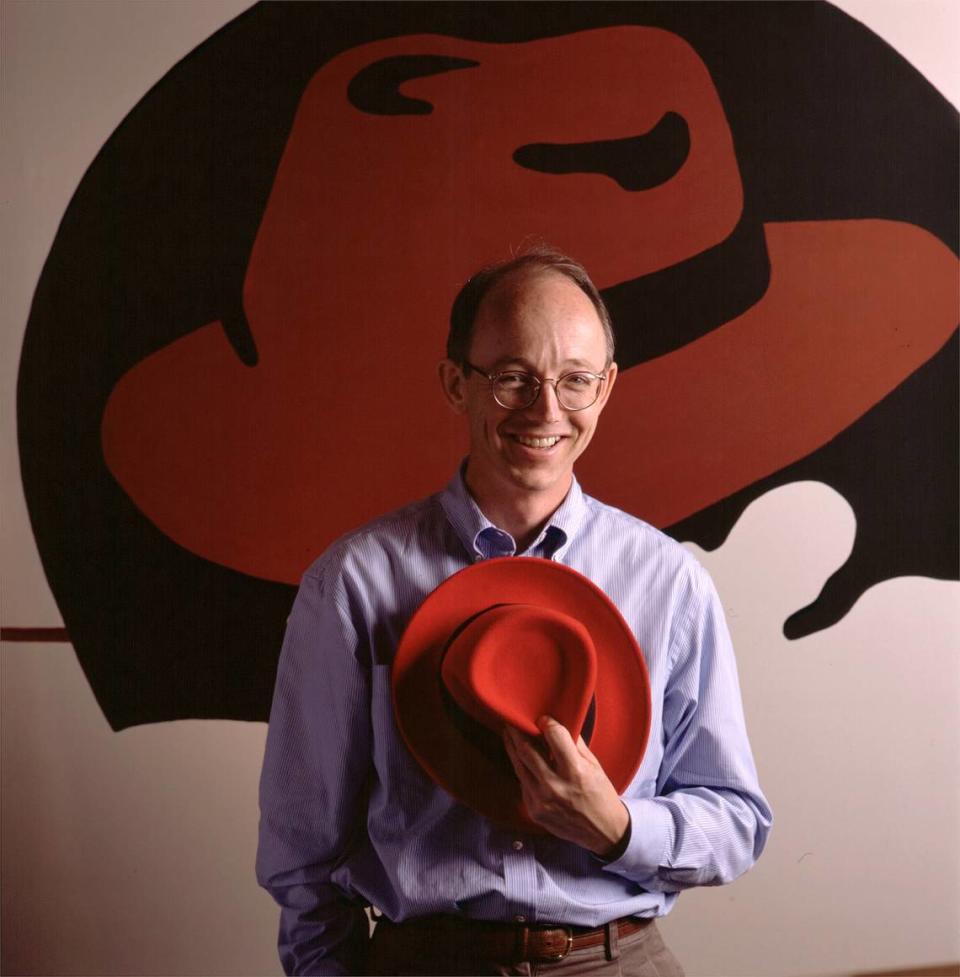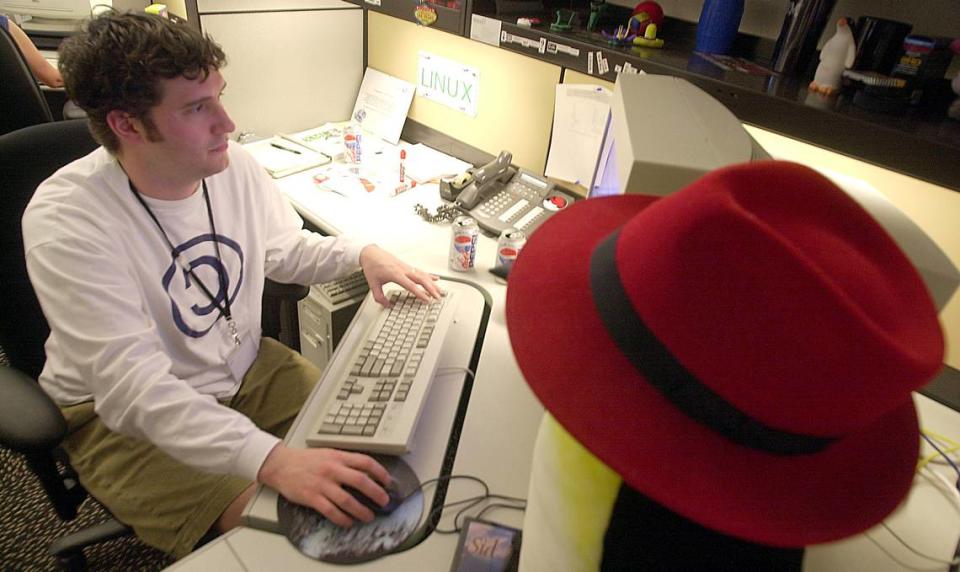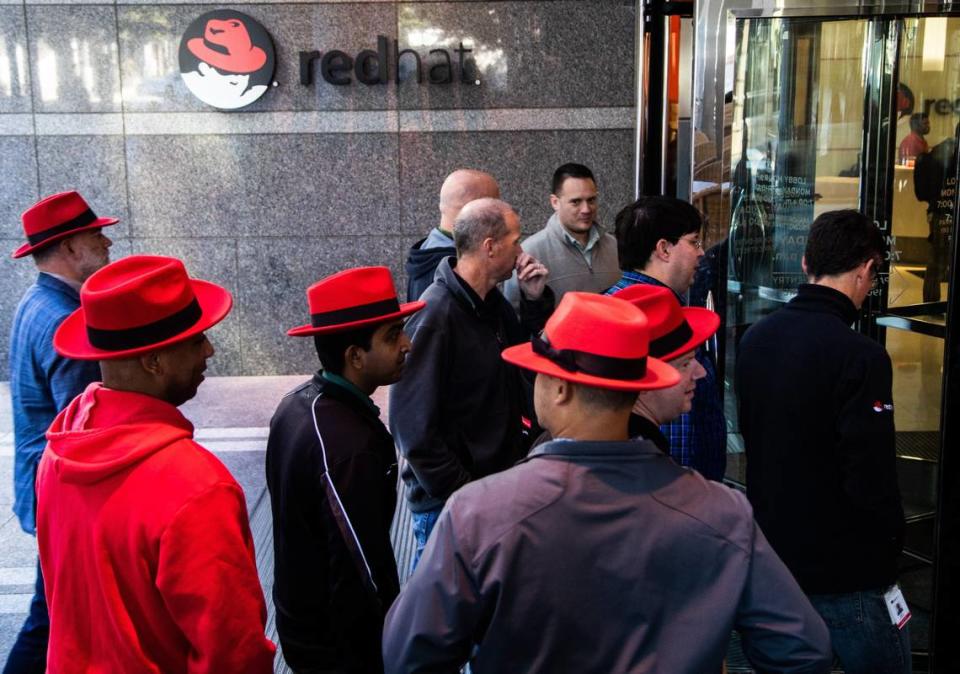30 Years of Red Hat: From a Durham apartment to IBM
From two guys in Durham to a multibillion-dollar corporation, here are key moments in Red Hat’s 30-year history.
1983: American software programmer Richard Stallman founds the GNU Project, a pioneering software-sharing community.
1991: Finnish student Linus Torvalds creates a PC operating system called Linux. He publishes its source code online for the public to freely access.
1993: Marc Ewing designs a Linux-based software distribution program he names Red Hat. Electronics salesperson Bob Young reaches out to Ewing, and the two begin marketing Red Hat Linux from the Triangle area.
February 1998: InfoWorld magazine names Red Hat’s Linux 5.2 its “Operating System of the Year” over Microsoft’s Windows.
September 1998: Intel and Netscape become two of Red Hat’s first large corporate investors.
November 1998: Red Hat relocates to new office at the Meridian Business Complex in Research Triangle Park. The company has roughly 80 employees.
Aug. 11, 1999: Red Hat hits the stock market with the eighth-largest first day gain in Wall Street history, its share price leaping from $14 to $52. It ended its first day of trading worth $3.5 billion. Within a month, Red Hat’s value surpassed $7.2 billion.

November 1999: Bob Young steps down as CEO, replaced by software executive Matthew Szulik. Marc Ewing leaves the company two months later.
June 2001: Red Hat posts its first profitable quarter.
June 2001: Microsoft CEO Steve Ballmer calls Linux “a cancer that attaches itself in an intellectual property sense to everything it touches.”

March 2002: Red Hat relocates to North Carolina State University’s Centennial Campus in West Raleigh. The company now employs 630 people and reports an annual revenue of $79 million.
October 2006: Oracle unveils plans to go after Red Hat’s market by distributing Linux at a lower price, which a tech analyst says “is easily the biggest challenge Red Hat has ever faced.” But Red Hat fends off the Oracle threat and remains the world’s largest distributor of the open-source Linux operating system.
January 2008: Jim Whitehurst becomes Red Hat’s third CEO.
September 2012: Red Hat obtains the naming rights to Raleigh’s 6,000-seat downtown amphitheater in a five-year deal worth $1.175 million.

2013: Red Hat moves its headquarters to a 19-story tower in downtown Raleigh. The company now employs more than 900 people locally and 5,700 worldwide.
October 2015: Red Hat announces deal to acquire the Durham-based software firm Ansible for a reported $100 million. Ansible’s automation platform has since become strategically key to Red Hat, and now IBM.

July 2019: IBM buys Red Hat for $34 billion in one of the largest software acquisitions in history. Leading up to the sale, Red Hat employs 13,360 people worldwide and reports yearly revenue of $3.3 billion.
April 2020: Jim Whitehurst steps down as CEO, replaced by longtime Red Hat executive Paul Cormier.
July 2022: Red Hat promotes Matt Hicks to become its fifth CEO. Hicks joined the company in 2006 as an IT developer and is based in Massachusetts.
April 2023: Hicks informs employees the company will lay off close to 4% of its global workforce. Red Hat employs roughly 2,200 in the Triangle-area. Neither Red Hat nor IBM share how many North Carolina employees will be affected.


 Yahoo Autos
Yahoo Autos 